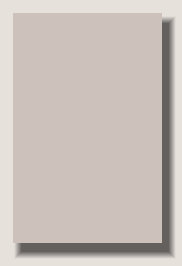




Acoustical tuning of a violin...(continued)
... A wood scraper and sandpaper of various grades on a foam sanding block are the tools I use to gradually bring the tap tones into alignment.
...This photo shows the small total amount of wood sawdust and shavings removed to completely acoustically tune this violin's fingerboard...
...Several grades of silicone carbide sandpaper (# 400 then # 600) bring the fingerboard back to a fine finish, ready to polish.
Next, a piece of pure linen cloth is wrapped around the foam pad and the fingerboard is briskly polished.
This is followed by polishing with a pure silk cloth in similar manner.
...Here we see the fingerboard, polished, tuned and ready for the violin to be re-strung and further tested. This process is repeated as necessary until the desired result {overall even tap tones and excellent playing performance} is achieved.
...This is my Hewlett Packard #3582A sound analyzer, which is specifically designed to give sound spectrum analysis from a gentle tap on a wood block or similar object.
...I used the H-P spectrum analyzer to make and tune a set of (40) wood blocks which are (5 or 10) Hz apart in frequency and span the range from 120 Hz to 410 Hz.
...Tapping near the end of each tuned 'sound bar' produces a 'wood' tap reference that I can cross-compare to the tap on the instrument, as a double check on accuracy or it can be used by itself with the instrument for 'tap tone' analysis,
or to calibrate another wood tap tone reference tool.
( Copyright 2020 (c) by David Langsather)
...I want to take you on a photo essay journey demonstrating this process on an actual instrument...
..Regulating the tap tone of the fingerboard in this manner will insure that all notes played in all ranges will be focused and powerful; the instrument will be 'even' in playing.
..Click on these three resources to hear the actual sound references that are useful.... :
(Modified 10/2020)
Page V_09
242 HZ Side Tap Tone
227 1/2 HZ Top Tap Tone
GTX094418
...Now let us suppose that the area indicated by the red arrow has the wrong tap tone. If it is too high in this area, then scrape or sand the 'too high' area until its tap tone decreases to match surrounding areas.
...If it is too low in tone, then sand or scrape the nearest side edge of the fingerboard until the area is raised to match the 227 1/2 HZ goal top surface frequency.
...This is the general rule, if the top surface area is too low, then scrape the nearest side of the fingerboard; if too to high in tap tone, then scrape or sand the top surface area until it is matches with surrounding areas.
...When doing this, listen only for the lowest overtone and ignore the higher pitched overtones.
...Current fingerboard frequencies are checked by tapping on the fingerboard top surface beside each string, all along its length.
...Even carefully made violins exhibit significant frequency differences over the fingerboard top surface. You can test this yourself by listening for the evenness of the tap tones..Listen for the lowest tap tone (ignoring the upper frequencies over tones). Ideally, this tap tone should be 227 1/2 HZ all over the top surface and 242 HZ all along each side.
...It is also important that the tap tones of the top surface of the tailpiece be constant all over its top surface (and especially at the waist area behind each string). This Tap Tone frequency should be 213 HZ (which is in acoustical harmony with the top paltes 213 HZ tuning).
..The String Bar of the Tail Piece is a separate piece of ebony wood and should be tuned exactly to 213 HZ (also on the wood acoustical Tap Tone harmony scale).
...When this is achieved, the response time of the instrument is minimized. It is important that the tap tone on both sides of each string at the contact point with the String Bar, are the same ( 213 HZ).




